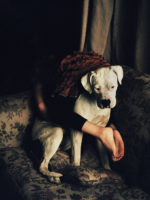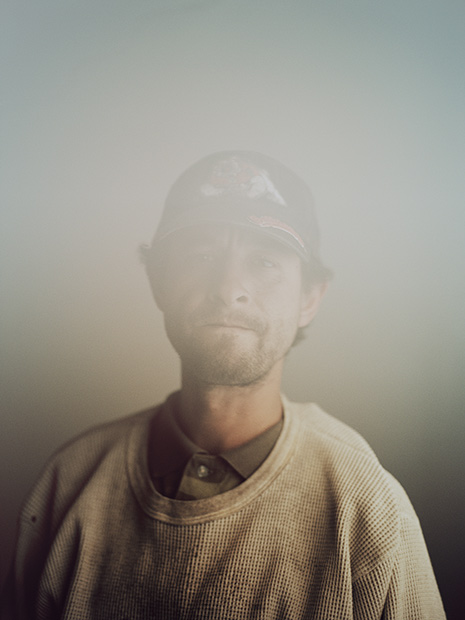Primary Preferred Artists
- Phillip Toledano – When I Was Six
- Yoshikatsu Fujii – Red String
- Colin Pantall – Sofa Portraits
- Arno Brignon – Joespehine
- Brooklyn Beckham – What I See
- Paul Gaffney – We Make The Path By Walking
- Sophie Calle
- Hekki Kaski – Tranquility
- Rita Puig-Serra Costa – Where Mimosa Bloom
Arno Brignon - Josephine




“July 1st, 2009, birth of Joséphine. Doubt and fear mingle with joy and pride. Having a child can be the simplest thing in the world. For us, it was long, unlikely, unique. In maternity, they call it a “precious pregnancy”. It is also an imbalance announced to our life as a couple, a love story for two to rebuild to three.”
This series by French artist, Arno Brignon looks at the fragility of birth and being a mother and how carefully you need to transform your life in order to mold this new introduction into your being as human – what you lived for before pregnancy all of a sudden changes and this explored through a very diverse range of portraits and landscapes delicately addressing the topic of birth and the fear of your family crumbling.
I believe the concept and content of this very moving series is relatable to my thoughts for my project where I will look at the fragility of family life through divorce and the events that come after this. I love the colours in this series and the textures that are achieved from using film as opposed to digital. The graininess is very nostalgic and suitable.
Paul Gaffney - We Make The Path By Walking


The British Journal Of Photography writes “Nothing much is happening in the images and there are no people in sight, yet everything is happening; knotted, overgrown roots catch the light and weave in and out to form complex networks; a craggy cliff-side reveals an intricate patterned texture; windswept vegetation exposes an inviting pathway. Gaffney’s sensitive handling of the landscape allows his subjects to breathe, and through their very subtlety the images sing.”
It is Gaffney’s first self-publishes book and contains photographs taken in rural Spain, Portugal and France. The idea he explains was to explore long-distance walking as “a form of meditation and personal transformation.”
Although this project does not include any people whatsoever and focuses solely on landscapes and the environment around us, the images included in the series I hope will influence the style of imagery I capture for the images I produce of the environmental/location aspect of my project. What I like about the images are the very surrealist sense about them, as in some examples, it looks very overgrown with greenery and this often juxtaposes against an urban background. My images will not be as dramatic as this but will adapt the effect of looking hazy.

Heikki Kaski - Tranquility
https://vimeo.com/125994256



Heikki Kaski (born in Kantvik, Finland, 1987) lives and works in Finland and throughout Scandinavia.
In the series, ‘Tranquillity’, there is a tension, a beat-down quality, that is beautifully conveyed in the barely balanced framing and dusty, drained palette of the photographs.
Heikki Kaski’s pictures of the town in California with a now population of 799 people and its inhabitants. It is a fractured series of reflections on a landscape that seems to have outlived its own history. He tells the story of the very quiet and isolated town and the people within through smart and sleek images of objects, portraits and landscapes. The images are very aesthetically pleasing and it something I am hoping to show in my project consisting of similar style images. Although a completely different context, the look and meaning behind the project will be similar to that of Kaski; I will look to the show the people that have a particular relation to environments and how this affects the lifestyle of these people. Although focusing on divorce, I am focusing on memories and the thoughts of my mum and dad that take them back to “good times” as such which will be displayed through very simple images of environments and portraits.
What I like about the project is the physical book which showcases the work so very elegantly. The set-out of the images on the pages, the colours involved and the overall look is very representative of the thoughts I have in mind to be minimalist in my presentation.
Rita Puig-Serra Costa - Where Mimosa Bloom

 Rita Puig-Serra Costa’s work is very captivating and speaks lots about family and the relatives within shown through the thoughtful use of showing a family tree through the archival portraits of her family members.
Rita Puig-Serra Costa’s work is very captivating and speaks lots about family and the relatives within shown through the thoughtful use of showing a family tree through the archival portraits of her family members.
Dealing with the grief that the photographer suffered following the death of her mother, ‘Where Mimosa Bloom’ by Rita Puig Serra Costa takes the form of an extended farewell letter; with photography skilfully used to present a visual dedication through speech and imagery to her deceased mother. This grief memoir about the loss of her mother is part meditative photo essay, part family biography and part personal message to her mother. These elements combine to form a fascinating and intriguing discourse on love, loss and sorrow. “Where Mimosa Bloom” is the result of over two years work spent collecting and curating materials and taking photographs of places, objects and people that played a significant role in her relationship to her mother, writes the site’s statement in which the book is available of purchase.
The concept is something similar to what I hope to follow through with in my own memoir to my mum and dad and myself and the lives we have since followed after the division of the family. I will be focusing on the relatives from then and from now who have played significant role in shaping my life to what it is now and who I am now because I feel using the technique of including myself and revolving the project around myself will make it easier for me to tell a better story.
I have already looked at the work of Serra-Costa and really enjoyed producing something so contemporary which revolves around the close collaboration with my subjects to produce the end result – I look forward to doing so again in my current project but on a much larger scale.
My Idea
I am going to focus my study on my mum and dad and the event that changed my own experiences as well their own and the events we would come to experience together, as a collective throughout my upbringing as a child into a teenager and into a young adult to who I am now – their divorce. When I was at the tender age of 4 – when I was aware of my surroundings and what went on in my life – who my most closest relatives were and who I could put my trust into to develop as human to who I am now. At 4, however, you don’t know the concept of love and what the event of you being born can do to a couple who were once unconditionally in love with each other. It causes stress, friction and unwanted distancing from one another – love has the potential to eventually break the people involved.
I have therefore chosen to explore this very fragile and mildly taboo subject of divorce further in my own personal investigation for the year to come. The final result of this very in-depth and rigorous investigation about the relationship which was once there between my mother and father and to what it is now will be a photobook consisting of the images I aim to produce for the remainder of my A2 year.
When handed the task to collate several ideas about what you wish to hone in on for your own personal study at the beginning of the week, it is an understatement to say that I struggled to find something I had the passion and motivation to do. I wanted to focus on the concept of family because I feel like more of a narrative can be told through this concept and I was very eager to start exploring own family. Hover, I did not know what this “special” thing was that I actually wanted to look into because I couldn’t think of anything that would generate some exciting thoughts in my mind. I had the idea to use my sister – to show the contrast between my childhood and hers through t use of my own personal archival imagery, or maybe the use of my girlfriend and her own family and the juxtaposition of her own and my now family and idea of “family”, however, this did not excite me enough and I finally came to the conclusion to investigate the divorce if my mum and ad when I was at the tender age of 4. This very influential event has affected my life since the very day I found out the spit of my parents and even though I d not fully understand this very complex subject and concept when told at the time, it has followed me throughout my life and it has moulded how I am, as well the rest of my family, including my now 4 year old sister herself and my relationship with her.
I will be focusing predominantly on the work of Japanese photographer, Yoshikatsu Fujii. In particular, I will be using her book, Red String as my inspiration for my project based around my parents and myself and my relationship with both of them.
Yoshikatsu Fujii was born and raised in Hiroshima City. He graduated from Tokyo Zokei University of Arts with BA in Art Film. He began photography work in Tokyo in 2006. His photographic works often deal with historical themes and memory lingering on in contemporary events.
What I love about Fujii’s work is the very diverse range of materials and resources used in the book. Not only is the actual book handmade very carefully with fabric and actual red-string used as decoration throughout, but he has used archival imagery from his personal archive about his mother and father, but also inserts of texts and transcribed discourse from his parents and contemporary imagery to balance out the theme of looking back at the past but also living in the moment and exploring more about his present day family.
The reasoning behind the title ‘Red String’ is because of a legend that use to exist in Japan. In Japan, legend has it that a man and woman who are predestined to meet have been tied at the little finger by an invisible red string since the time they were born.
Unfortunately, the red string tying my parents undone, broke, or perhaps was never even tied to begin with. But if the two had never met, I would never have been born into this world. If anything, you might say that there is an unbreakable red string of fate between parent and child.



Mind Map of Ideas for my Project


